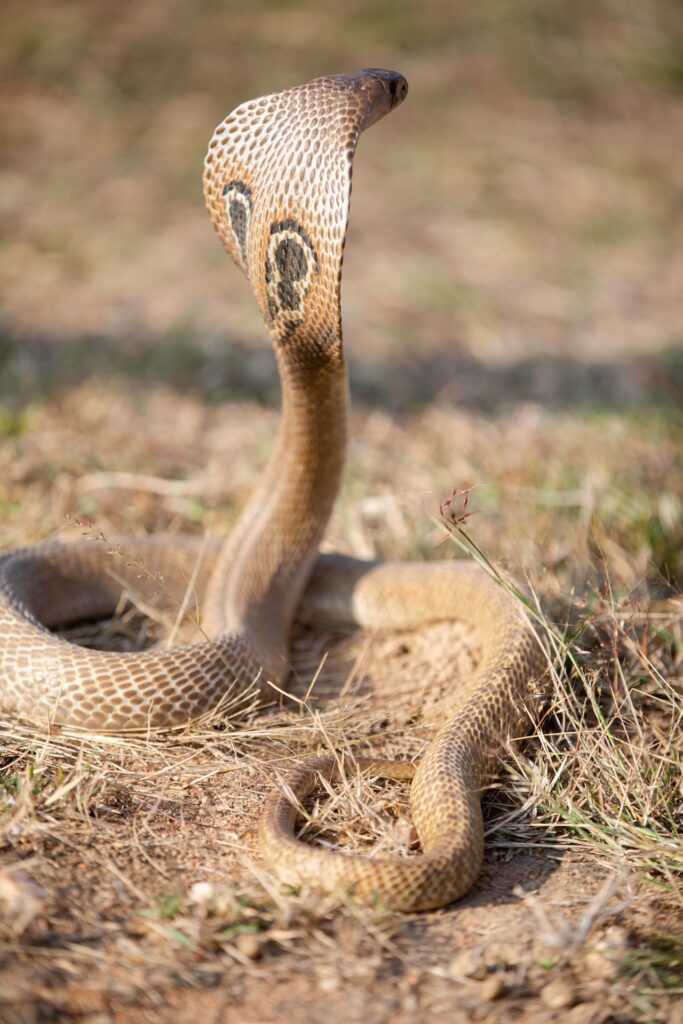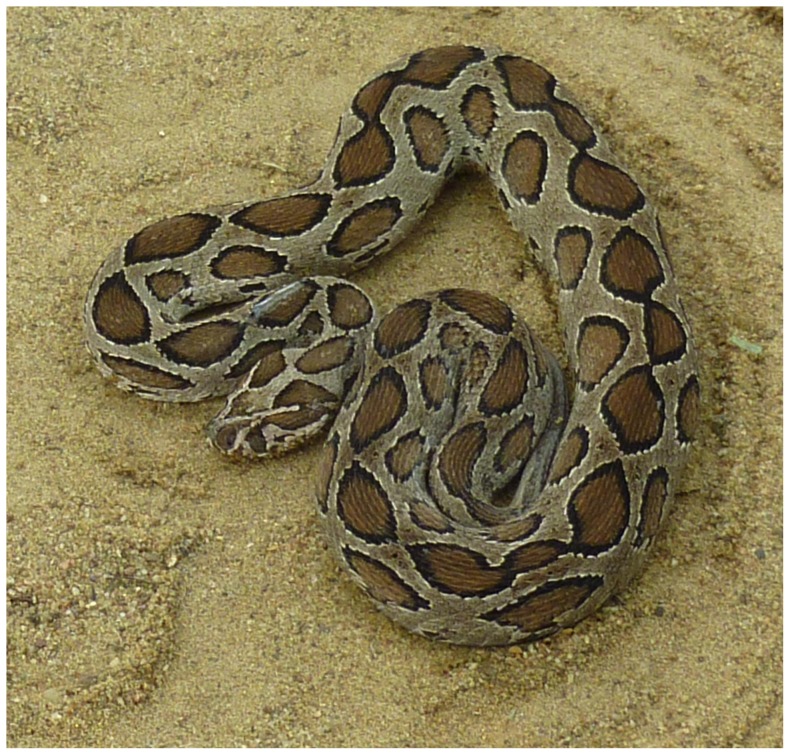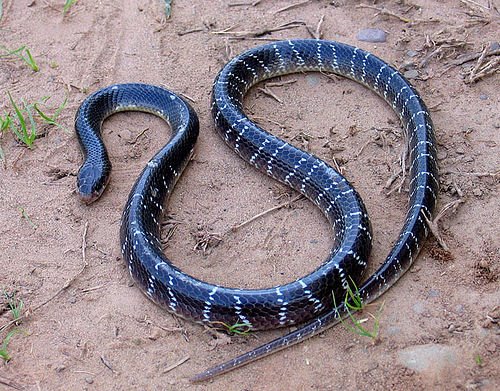Snake Bites;
Overview:
India is home to a rich diversity of snake species, with some being venomous and others completely harmless. In this comprehensive guide, we will explore the common venomous snakes found in India, their venom, and delve into the medical management of snakebites, focusing on neuroparalytic and vasculotoxic snakebites.
Common Venomous Snakes in India
1. Indian Cobra (Naja naja)

- Distribution: Throughout India.
- Venom: Neurotoxic venom affecting the nervous system.
- Symptoms: Paralysis, difficulty breathing, and potentially fatal without treatment.
2. Russell’s Viper (Daboia russelii)

- Distribution: Widespread in India.
- Venom: Hemotoxic, causing tissue damage and bleeding.
- Symptoms: Swelling, severe pain, bleeding, and organ damage.
3. Common Krait (Bungarus caeruleus):

- Distribution: All over India.
- Venom: Neurotoxic venom causing paralysis.
- Symptoms: Muscle paralysis, respiratory distress, and potential fatality if untreated.
Common Non-Venomous Snakes in India
- Rat Snake (Ptyas mucosa)
- Appearance: Slender with blotchy patterns.
- Behavior: Eats rodents and poses no threat to humans.
- Checkered Keelback (Xenochrophis piscator)
- Appearance: Olive-green with distinct black markings.
- Behavior: Non-venomous and primarily feeds on aquatic prey.
- Indian Rock Python (Python molurus)
- Appearance: Large, heavy-bodied snake with a distinctive pattern.
- Behavior: Non-venomous constrictor, preys on mammals and birds.
Signs And Symptoms Of Snake Bites:
Here are the common signs and symptoms associated with each type of snakebite:
Neurotoxic Snake Bites:
- Weakness: Muscle weakness, particularly in the bitten limb, is a hallmark sign of neurotoxic snakebites.
- Paralysis: Venom from neurotoxic snakes can cause progressive paralysis, which may start at the site of the bite and then spread to other parts of the body.
- Ptosis: Drooping of the eyelids (ptosis) is a common neurotoxic symptom, leading to difficulty keeping the eyes open.
- Diplopia: Double vision (diplopia) can occur due to paralysis of the eye muscles.
- Dysphagia: Difficulty in swallowing (dysphagia) may result from paralysis affecting the throat muscles.
- Dysarthria: Difficulty in speaking (dysarthria) due to muscle weakness can occur.
- Respiratory Distress: Severe neurotoxic envenomations can lead to respiratory distress, including difficulty breathing or even respiratory failure.
- Sensory Changes: Some individuals may experience altered sensations, such as numbness or tingling, in addition to muscle weakness.
Vasculotoxic Snake Bites:
- Local Swelling: Swelling and pain around the bite site are common early symptoms of vasculotoxic snakebites.
- Bleeding: Vasculotoxic venom can disrupt blood clotting, leading to bleeding from the bite wound, gums, nose, or other mucous membranes.
- Ecchymosis: The venom can cause bleeding under the skin, resulting in the appearance of purplish or reddish patches known as ecchymosis or petechiae.
- Shock: Severe vasculotoxic envenomations can lead to shock, characterized by a drop in blood pressure, rapid heart rate, and altered mental state.
- Hematuria: Blood in the urine (hematuria) can occur due to bleeding within the urinary tract.
- Hematemesis and Melena: In severe cases, there may be vomiting of blood (hematemesis) or the passage of black, tarry stools (melena).
- Organ Damage: Prolonged bleeding and shock can damage vital organs, leading to symptoms specific to the affected organ, such as chest pain in the case of heart involvement.
- Coagulopathy: Coagulation abnormalities can result in uncontrolled bleeding.
It’s important to note that not all snakebites fit neatly into one category or the other, as some venomous snakes may have a combination of neurotoxic and vasculotoxic effects. Additionally, the severity of symptoms can vary depending on factors like the amount of venom injected and the individual’s response.
Medical Management of Neuroparalytic and Vasculotoxic Snake bites:
Neuroparalytic Snake bites
- Immediate Action: After a bite from a snake like the Indian Cobra or Common Krait, it is essential to:
- Stay calm and still.
- Immobilize the bitten limb to slow the spread of venom.
- Do not apply a tourniquet or cut the wound.
- Seek medical help immediately.
Medical Treatment of Neuroparalytic snake bites
The treatment of neuroparalytic snake bites, involves a combination of interventions to counteract the effects of the venom. Here’s a general overview of the medical treatment, including antivenom (ASV), atropine, neostigmine, and supportive care:
- Antivenom (ASV): Antivenom is the primary treatment for snake bites. It’s specific to the type of snake responsible for the bite and works by neutralizing the venom. Administering antivenom should be done as soon as possible by trained medical professionals. The dosage and type of ASV depend on the snake species and the amount of venom injected.
- Atropine: Atropine is used to manage symptoms related to excessive acetylcholine activity caused by the neurotoxic venom. Symptoms may include excessive salivation, sweating, and difficulty breathing. Atropine helps counteract these effects by blocking acetylcholine receptors. The dosage is tailored to the patient’s symptoms.
- Neostigmine: Neostigmine is often used in combination with atropine. It works by increasing acetylcholine levels at neuromuscular junctions, helping to reverse muscle weakness and paralysis caused by the venom. Proper dosing and administration are critical and should be overseen by healthcare professionals.
- Supportive Care:
- Respiratory Support: In severe cases where respiratory muscles are affected, mechanical ventilation may be required to assist with breathing.
- Pain Management: Over-the-counter or prescription pain relievers may be given to manage pain at the bite site.
- Hydration: Intravenous fluids may be administered to maintain proper hydration and electrolyte balance.
- Wound Care: Keeping the bite site clean and dressing it appropriately to prevent infection is essential.
- Monitoring: Continuous monitoring of vital signs, neurological status, and overall condition is crucial to assess the effectiveness of treatment.
Vasculotoxic Snakebites
- Immediate Action: Following a bite from a snake like Russell’s Viper:
- Stay calm and still.
- Immobilize the bitten limb.
- Do not apply a tourniquet or cut the wound.
- Seek immediate medical attention.
Conclusion
India’s snake population is diverse, with venomous and non-venomous species coexisting. Being aware of these snakes and understanding the medical management of snakebites is vital. In case of a snakebite, it is crucial to stay calm, immobilize the affected limb, and seek immediate medical attention. The availability of polyvalent Antivenom Serum (ASV) plays a pivotal role in saving lives by neutralizing the effects of venom, whether it’s neuroparalytic or vasculotoxic. With proper knowledge and swift action, snakebite victims can receive the necessary care and increase their chances of a full recovery.
Pingback: Home - Common health conditions - ECG Oxford